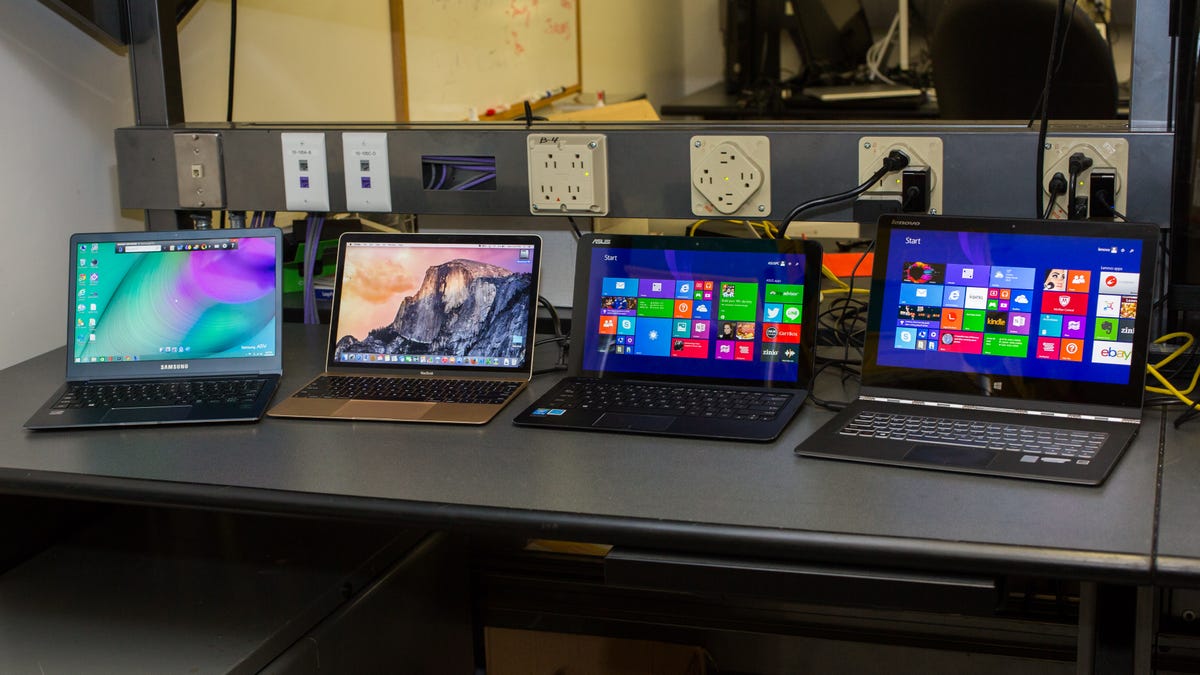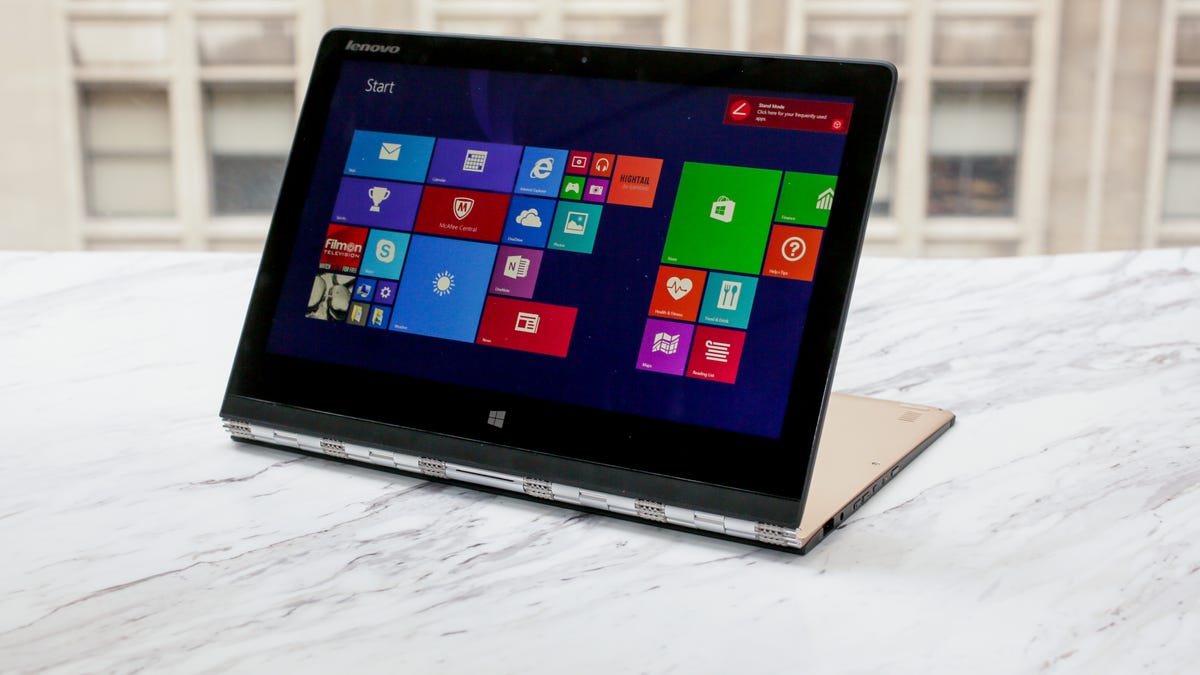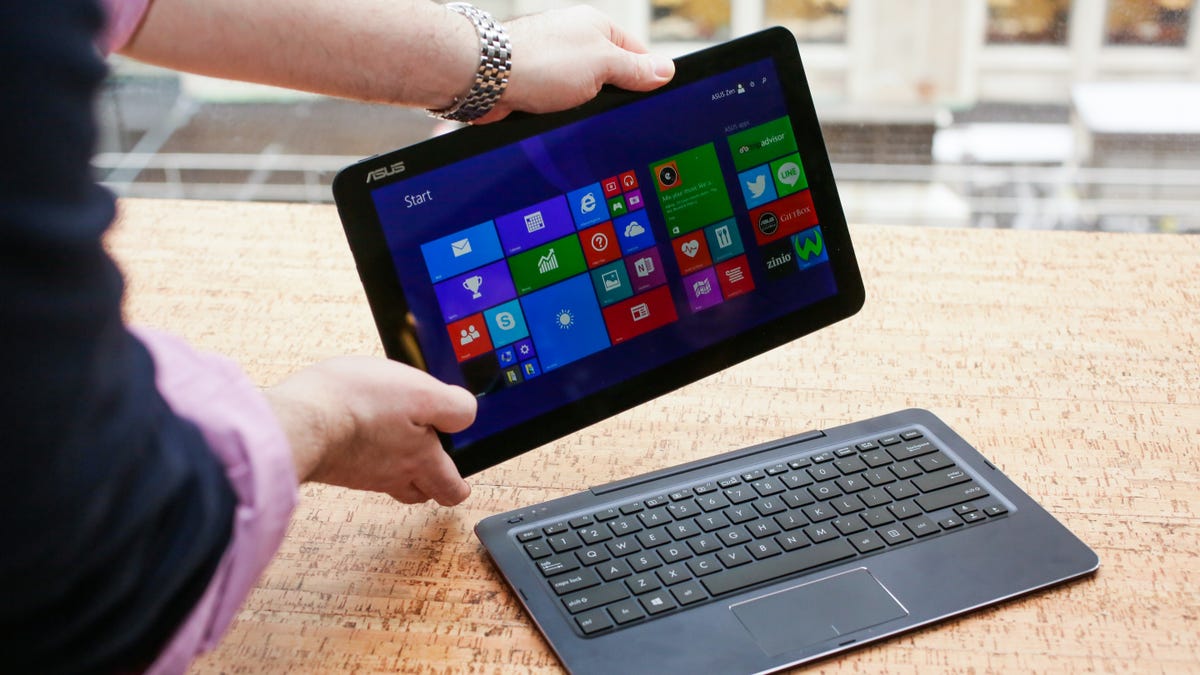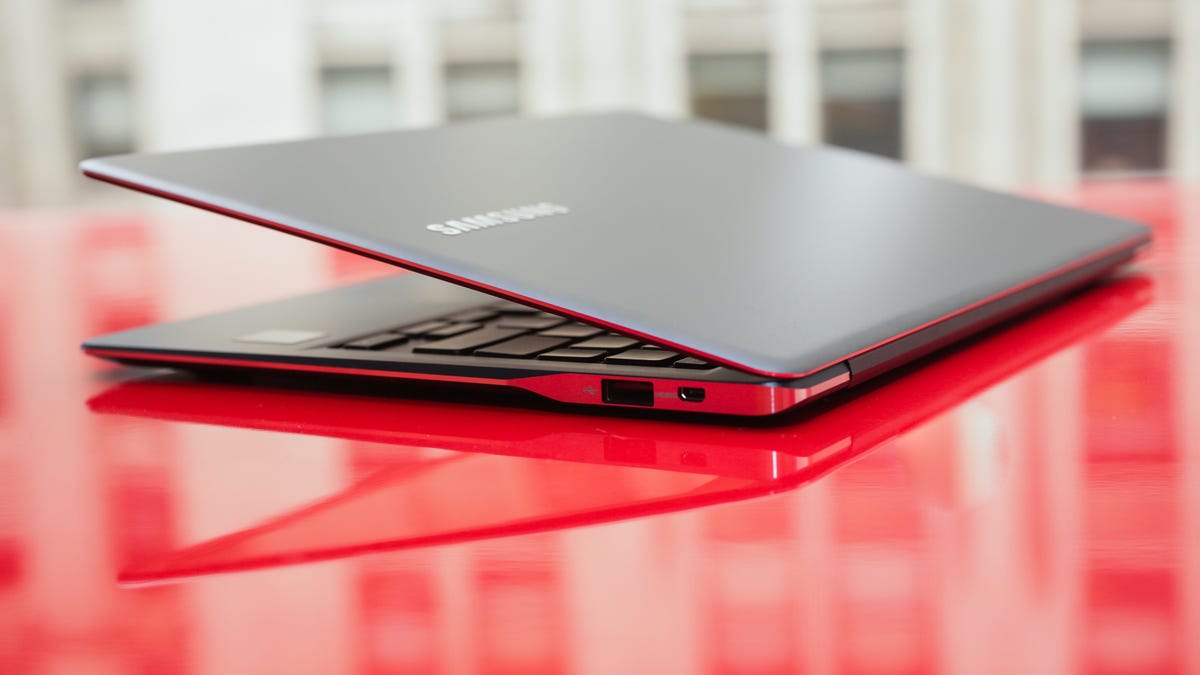
Sarah Tew/CNET
No computer component in recent years has been as tough to pin down as Intel’s Core M processor. First seen in late 2014 and turning up in more systems in early 2015, this energy-efficient chip came with an appealing pitch.
According to Intel, Core M would power laptops, tablets and hybrids designed to be thin and light, and even computers that could run without noisy fans, which could lead to quieter systems with longer battery life. These PCs would be priced at a premium, perhaps $700 US and up, but the combination of long battery life, good performance, and smaller bodies would make these desirable machines.
Core M systems: Prices and storage
| System | Price as reviewed; RAM/Storage |
|---|---|
| Apple MacBook (12-inch, 2015) | $1,299; 8GB/256GB |
| Asus Transformer Book T300 Chi | $899; 8GB/128GB |
| Lenovo Yoga 3 Pro | $1,299; 8GB/256GB |
| Samsung Ativ Book 9 (2015) | $1,199; 4GB/128GB |
Except that actual real-world performance from the first wave of Core M systems we’ve tested in the CNET Labs has been all over the place. The first PC we tested with a Core M CPU, the Lenovo Yoga 3 Pro hybrid, felt sluggish — even during everyday tasks.
Its battery life, under six hours in our video-playback battery-drain test, felt more appropriate for a budget midsize laptop than a premium $1,000-plus system designed to be highly portable. The Yoga 3 Pro remains one of the best physical laptop/hybrid designs in years, but it did not make a compelling first impression for the Core M CPU.


Sarah Tew/CNET
The next Core M system we tested was the Asus Transformer Book T300 Chi , a pull-apart hybrid with a removable keyboard base. It actually scored the fastest of any of the Core M computers we’ve tested in two of our single-app tests, albeit not by a wide margin, and just slightly behind first place in a multitasking test. In everyday use, it felt faster than Yoga 3 Pro, but its at-times-awkward keyboard and even shorter battery life than the Yoga meant it was still not the best-case scenario for a Core M showpiece. Working to its advantage, however, was a lower price at $899 US (AU$1,299; not available in the UK).


Sarah Tew/CNET
The two most-recent Core M systems to be tested in the CNET Labs are virtually mirror images of each other. The Apple MacBook and Samsung Ativ Book 9 are both 12-inch clamshell laptops with better-than-HD resolutions and non-touch displays. Both are very slim, light, premium systems, each weighing just a hair over two pounds. Where Apple goes minimalist, including just a single USB-C port for connectivity and power, Samsung manages to fit in two full-size USB ports, plus a Micro-HDMI output.
With the previous results from the earlier two Core M systems, there was much concern that these two new models would suffer from performance and battery-life issues, especially as the MacBook
started at $1,299 (£1,049, AU$1,799), while the Samsung Book 9 started at $1,199 (£1,199 in the UK), and went up to $1,399 to match the MacBook’s configuration.


Sarah Tew/CNET
In benchmark testing, the MacBook scored the best in our challenging multitasking test, but only by a small margin over the Asus T300. The Samsung Book 9 placed in the middle of the pack in most of our tests, although the above average keyboard and touchpad helped it feel generally quite usable. The MacBook greatly benefitted from Apple’s OS X optimization and multitouch gestures, which means navigation is smooth and easy, and the overall feel was much closer to a standard Core i5 laptop than any of the other Core M systems we tested.
(Note that only the comparative Core M system benchmarks are displayed herein. Click through to the individual reviews to see how each of these compared to Intel Core i5 and Atom-based systems.)
Handbrake multimedia multitasking test
Apple MacBook (12-inch, 2015)
465
Asus Transformer Book T300 Chi
468
Samsung Ativ Book 9 (2015)
563
Lenovo Yoga 3 Pro
682
Note:
Shorter bars indicate better performance (in seconds)
Adobe Photoshop CS5 (64-bit) image-processing test
Asus Transformer Book T300 Chi
238
Lenovo Yoga 3 Pro
294
Apple MacBook (12-inch, 2015)
307
Samsung Ativ Book 9 (2015)
311
Note:
Shorter bars indicate better performance (in seconds)
Apple iTunes encoding test
Asus Transformer Book T300 Chi
109
Apple MacBook (12-inch, 2015)
130
Samsung Ativ Book 9 (2015)
130
Lenovo Yoga 3 Pro
142
Note:
Shorter bars indicate better performance (in seconds)
Video-playback battery-drain test
Apple MacBook (12-inch, 2015)
747
Samsung Ativ Book 9 (2015)
457
Lenovo Yoga 3 Pro
346
Asus Transformer Book T300 Chi
314
Note:
Longer bars indicate better performance (in minutes)
The MacBook also stood out with the best battery life of the bunch, and by a wide margin. While Apple is known for building power-efficient laptops that run a lot longer than their Windows-powered counterparts, this is also attributable to the large battery inside the 12-inch MacBook. Aside from a compact motherboard with the RAM and flash storage soldered right on, the interior of the chassis is practically all battery, with the the custom power cell layered to fit every possible empty space.


Sarah Tew/CNET
While the MacBook still feels like the most “usable” of these systems in hands-on anecdotal testing, when looking at the performance numbers from all four, one thing stands out. The least-expensive, the Asus T300 Chi, was the fastest performer in the majority of tests, and virtually tied in our multitasking test, thanks in part to a slightly faster 1.2GHz version of the Core M chip (which is also available as part of a $300 upgrade to the MacBook).
System configurations
| Apple MacBook (12-inch, 2015) | OSX 10.10.2 Yosemite; 1.1GHz Intel Core M-5Y31; 8GB DDR3 SDRAM 1,600MHz; 1,536MB Intel HD Graphics 5300; 256GB Flash memory |
|---|---|
| Asus Transformer Book T300 Chi | Windows 8.1 (64.bit); 1.2GHz Intel Core M-5Y71; 8GB DDR3 SDRAM 1,600MHz; 3,839MB (shared) Intel HD 5300 Graphics; 128GB SSD |
| Lenovo Yoga 3 Pro | Windows 8.1 (64-bit); 1.1GHz Intel Core M-5Y70; 8GB DDR3 SDRAM 1,600MHz; 3,839MB (shared) Intel HD Graphics 5300; 256GB SSD |
| Samsung Ativ Book 9 (2015) | Windows 8.1 (64.bit); 1.1GHz Intel Core M-5Y31; 4GB DDR3 SDRAM 1,600MHz; 2,005MB (shared) Intel HD 5300 Graphics; 128GB SSD |
But before we declare this a rare case of the least-expensive product being the best overall performer, note that the Asus T300 Chi also had the absolute worst battery life of the bunch. At barely over five hours of battery life, it ran for a full 30 minutes less than even the Yoga 3 Pro.
Our current Core M conclusions
Suffice it to say, many of you won’t be ditching your full-size laptops for fanless alternatives anytime soon. Based on our tests of these initial Core M systems, we’ve arrived at the following takeaways:
- Price doesn’t always correlate to raw performance.
- Having a bigger physical battery can make a world of difference.
- Despite generally favorable impressions of each of these computers, we have yet to find a Core M system that really works as an all-day, everyday workhorse.




